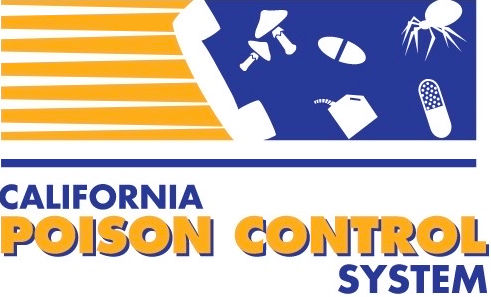Watch Close Calls with CPCS: Rattlesnakes to learn about rattlesnake bite safety tips and prevention from our poison experts.
About rattlesnakes
Rattlesnakes are venomous snakes known for their rattling tails (listen and hear what a rattlesnake sounds like). You may not always hear a rattling sound despite having a rattlesnake nearby. Throughout their lifespan from the moment they hatch, rattlesnakes contain poisonous venom. Their bites can be very dangerous and sometimes deadly.
Rattlesnakes are commonly found on hiking trails and in rural areas throughout California. The California Poison Control System receives hundreds of rattlesnake exposure calls every year, especially during April to October—when the weather is warmer and people head outdoors. Severe or even life-threatening symptoms may occur within minutes or couple of hours after a rattlesnake bite.
As rattlesnake bites can be deadly, your best bet is to call 911 and get to a hospital as soon as you can. Here’s the good news: Rattlesnake bites are preventable! Learn how to identify and prevent poison exposure from rattlesnake bites by following the tips below.
Rattlesnake safety tips
- A snake bite can happen to you
- Do not touch animals in the wild
- Learn about snake bite prevention & first-aid
- Rattlesnakes are venomous animals that should be admired from afar
- They only bite to defend themselves
Rattlesnake bite symptoms
- Bleeding
- Bruising
- Collapse
- Difficulty breathing
- Drooling
- Extreme pain
- Lightheadedness
- Nausea
- Shock, in rare cases
- Swelling at the location of the bite
First aid
- If bitten, remain calm and do not panic
- Call 911 immediately
- Call the Poison Hotline at
1-800-222-1222 - Keep the bite site elevated above your heart, on your way to a hospital
- What about pets? Many veterinarians now carry rattlesnake anti-venom and vaccines for dogs and other pets—contact your veterinarian for more information
Do not attempt the following:
- Do not apply ice or heat to the bite site
- Do not cut or slice around the bite site
- Do not suck out venom (poison)
- Do not take medicines or consume alcohol/caffeinated drinks
- Do not use a tourniquet to restrict bloodflow
Rattlesnake bite prevention
Take precautions outdoors and minimize your chance of being bitten by a rattlesnake.
- Carefully inspect logs or rocks before sitting on themWhen hiking outdoors, wear protective gear and pay attention to your surroundings
- Carry a fully charged mobile phone and let people know where you plan to hike and how long you will be gone
- Do not touch or disturb the snake, even if it appears dead
- Hike with a buddy
- If you spot a rattlesnake, stay away
- Look after children and keep dogs and other pets on a leash
- Stay on trails, away from underbrush and tall weeds
- Watch your step and pay attention to your surroundings
The difference between venomous and poisonous
Rattlesnakes are venomous animals that should be admired from afar. They only bite to defend themselves.
A venomous animal has defense mechanisms, like fangs or a stinger, used to inject a toxin into another organism. This animal bites or stings to deliver its venom to defend itself from harm.
A poisonous animal secretes poison from its body. This animal's poison has to be inhaled, swallowed, or absorbed through the skin by another organism to expose that organism to its poison.
Remember it this way:
- Venomous = it bites or stings you
- Poisonous = you bite, inhale, or absorb it
Identification guide: Common rattlesnakes in California
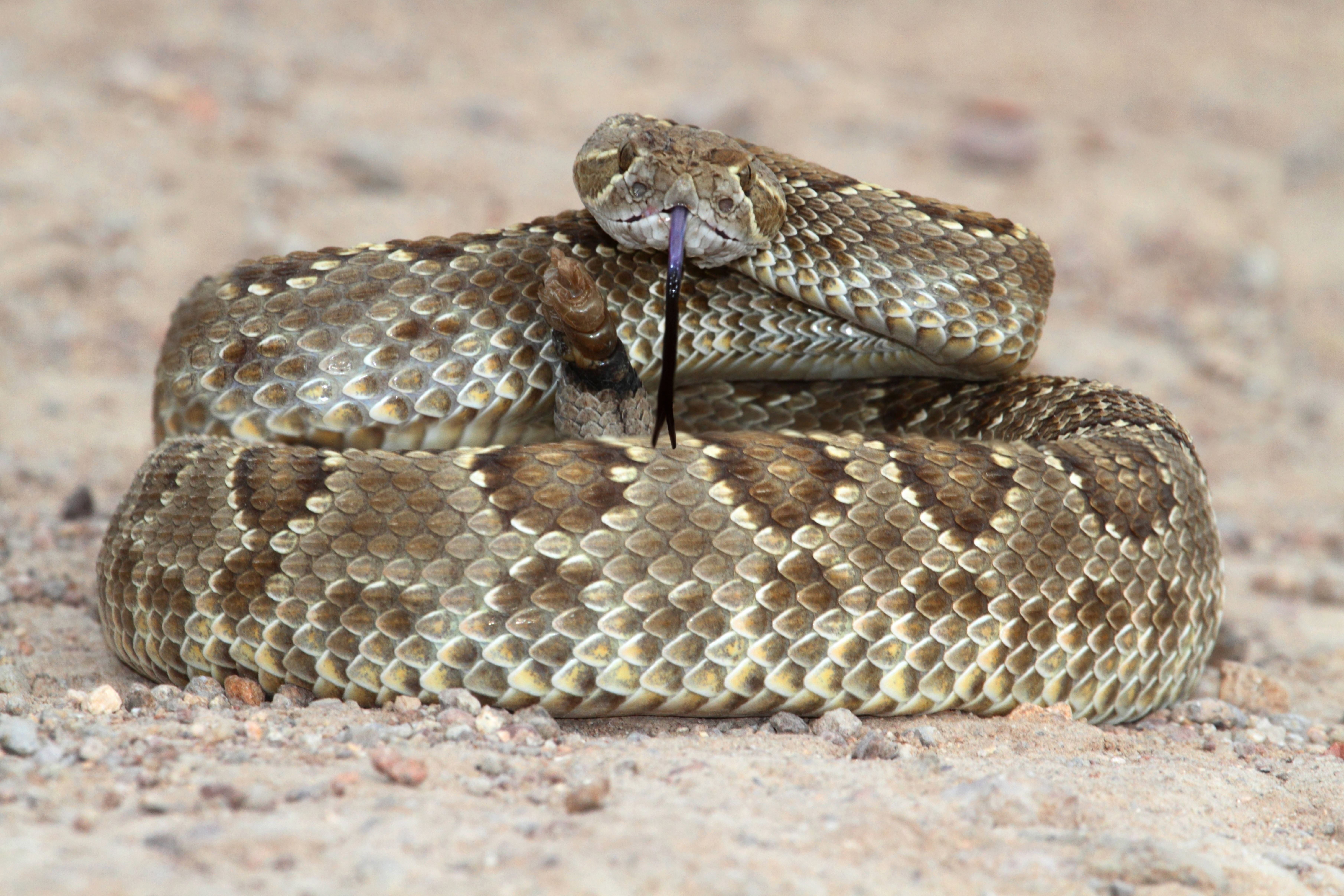
Mojave Rattlesnake
- Size: 24-51 inches in length
- Can be found in the Mojave Desert.
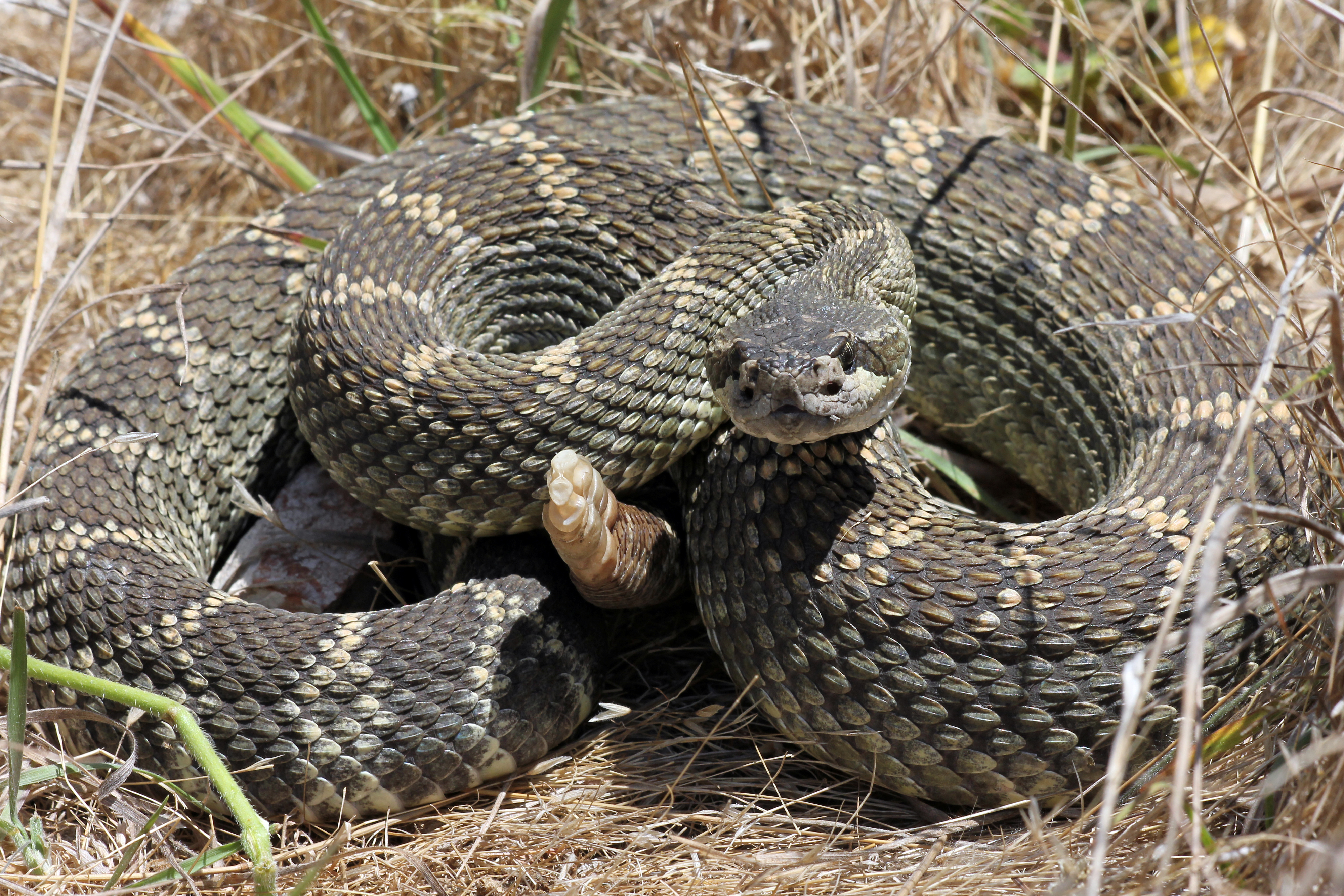
Northern Pacific Rattlesnake
- Size: 15-36 inches in length
- Can be found in the Central Valley, CA.
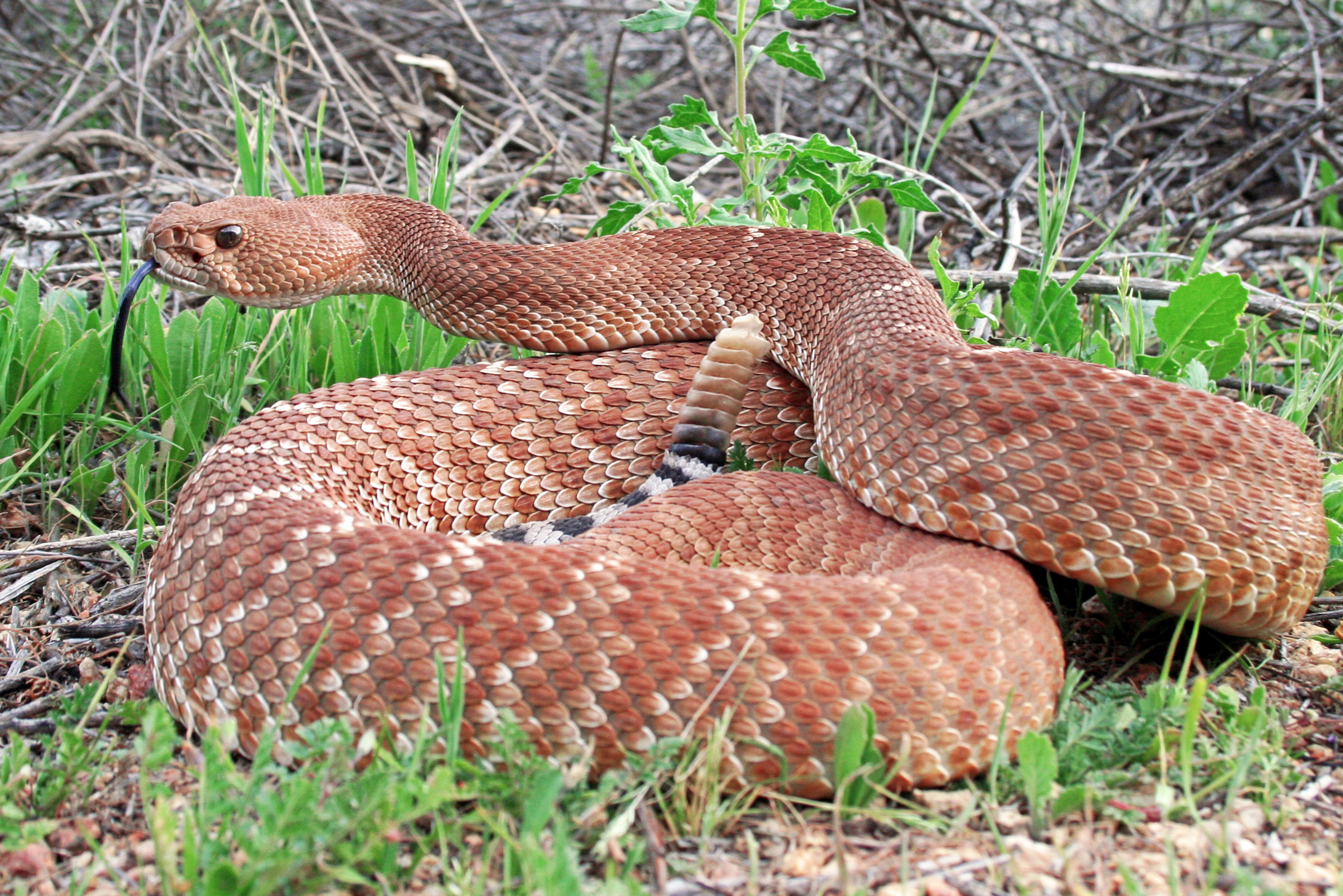
Red Rattlesnake
- Size: 30-65 inches in length
- Can be found in Southwestern CA into the Baja Peninsula.
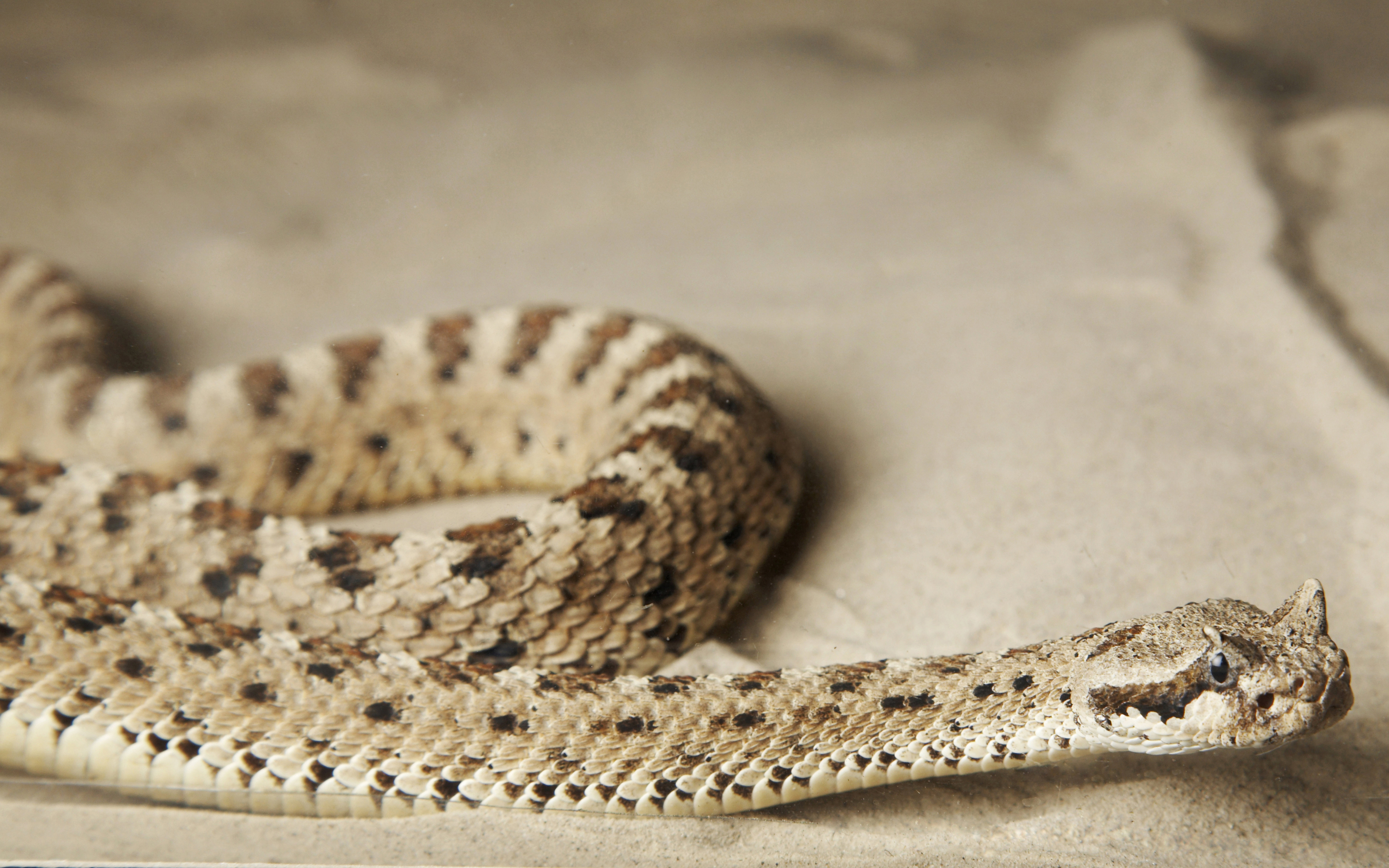
Sidewinder
- Size: 12-18 inches in length
- Can be found in the Southeast CA Deserts.
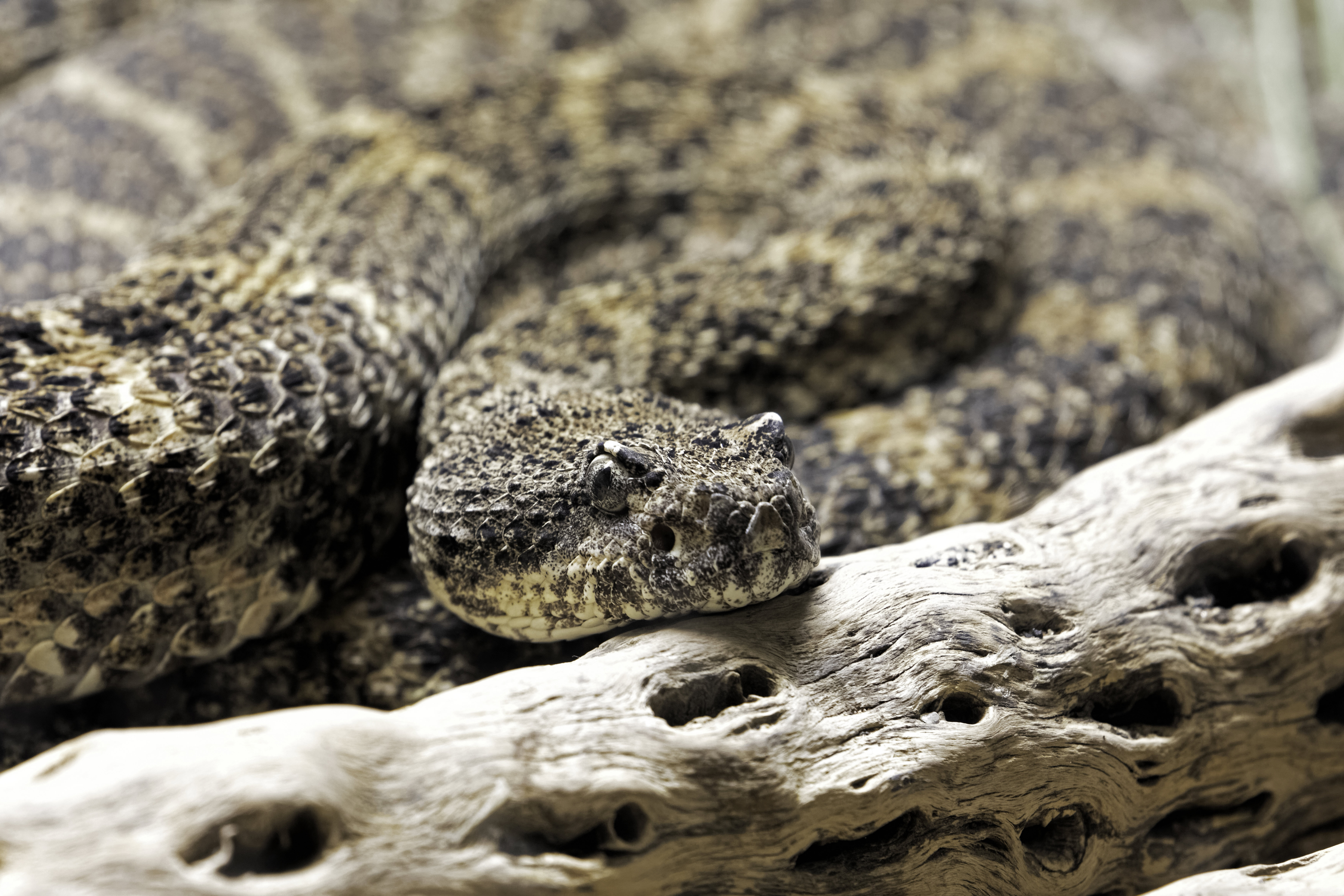
Speckled Rattlesnake
- Size: 23-52 inches in length
- Can be found in the Southeast CA Deserts.
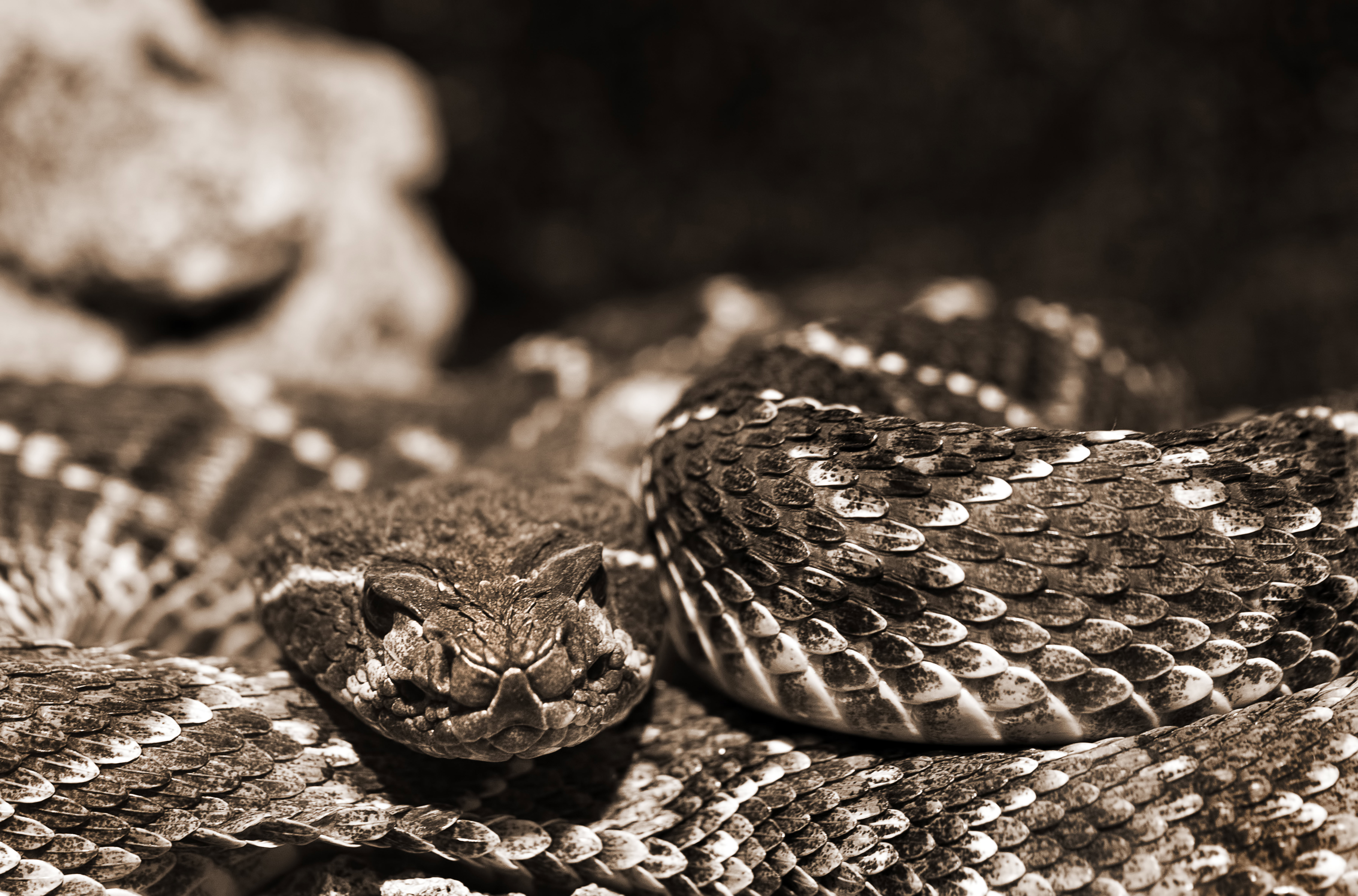
Western Diamondback Rattlesnake
- Size: 30-90 inches in length
- Can be found in the Southeast CA Deserts.
